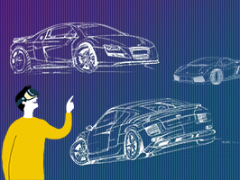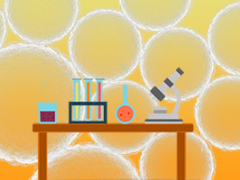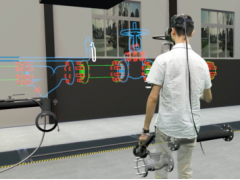Direction: Two Korean potential clients Lee Jun-jae and Han Jeong-tae are visiting a mooncake making workshop in Guangzhou. Susan, director of the workshop, is introducing to them the making process of mooncakes.
场景:月饼生产车间 人物: Susan、Lee Jun-jae、Han Jeong-tae
Susan: Mr. Lee and Mr. Han, welcome to our workshop. As you can see, we make mooncakes with modernized technique.
Lee Jun-jae: Well, your workshop is well mechanized.
Susan: Yes. Last year, we purchased a batch of modern equipment.
Lee Jun-jae: It’s interesting that the whole process of mooncake-making could be so automatic.
Susan: Yes. The applying of the programmable controllers to control the whole production line, and we have a fully automated production. That improves the reliability of the production line and control flexibility. And it also reduces working intensity dramatically.
Han Jeong-tae: Oh, yeah. How do you start the working process?
Susan: We start producing mooncakes by putting all the ingredients on this electronic scale and then we make the exact weight.
Lee Jun-jae: So, could you tell us what the ingredients are?
Susan: As far as the filling is concerned , we have different ingredients for different flavors. For example, we have lotus seed paste, red bean paste, five kernal, pinapple paste, etc. But the most popular one in Guangzhou is perhaps the lotus seed paste.
Lee Jun-jae: Then what are the basic ingredients for the lotus seed paste mooncakes?
Susan: We use lotus seed paste as the filling's main ingredient. We also need nuts for extra texture. And we prefer one kind of flaky dough to layering the cakes with water-based and shortening-based dough. Also we will have peanut oil, syrup, soda, caramel, eggs and water. By the way, all of our ingredients are fresh.
Han Jeong-tae After preparing all the ingredients, what should be done? what is the next procedure?
Susan: Well, then we come to the making of the skin. So first, the syrup and the water is mixed, then peanut oil is gradually added and whisked well. Finally, the flour is added and stirred overly.
Lee Jun-jae: Oh, then the skin is OK?
Susan: Yes. Then we put the skin and the filling into the full-automatic machine this modeler and crust machine and then they will be transported to the automatic line.
Han Jeong-tae: It’s quite automatic. So amazing.
Susan: It really is. Then preheat oven to 180℃ to 220℃ and bake in the preheated oven for about 10 to 12 minutes until the pastry turns golden brown.
Lee Jun-jae: Is 10 to 12 minutes a required time?
Susan: Yeah, it is. And at this time, remove them from the oven. After that, we put all the semi-finished products under the ultraviolet lamp to make them cool.
Lee Jun-jae: So when can we pack the mooncakes?
Susan: Well, when the temperature of surface comes to 40-50℃, it will be OK. And then the last procedure of making mooncakes is the quality assurance testing. In the testing, we should ensure that the pack is properly resealed and there are no impurities.
Han Jeong-tae: Oh, well, it sounds interesting to produce a moon cake.
Lee Jun-jae: Yes, that’s very interesting. And how many kinds of mooncakes do you produce?
Susan: We produce snowy mooncakes, lotus seed paste mooncakes, and fruit mooncakes.
Han Jeong-tae: Oh, I love eating fruit mooncakes!
Susan: You can take some home!
Han Jeong-tae: Oh, thank you. By the way, what’s your monthly output?
Susan: About 100,000 boxes, 4 in a box.
Lee Jun-jae: That sounds good. Thanks a lot Susan.
Han Jeong-tae: Thank you.
Susan: My pleasure.

2016-05-13

2016-09-12

2017-09-18

2017-08-31

2017-08-09

2017-09-18